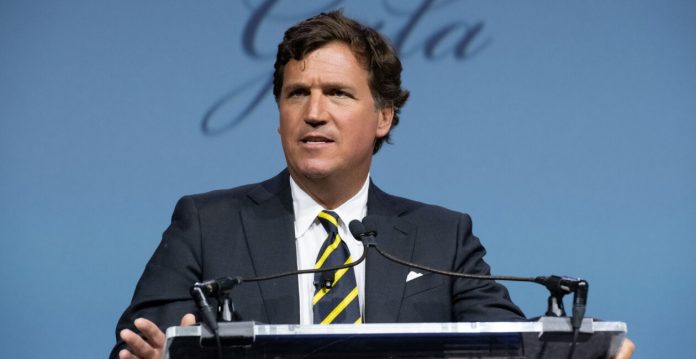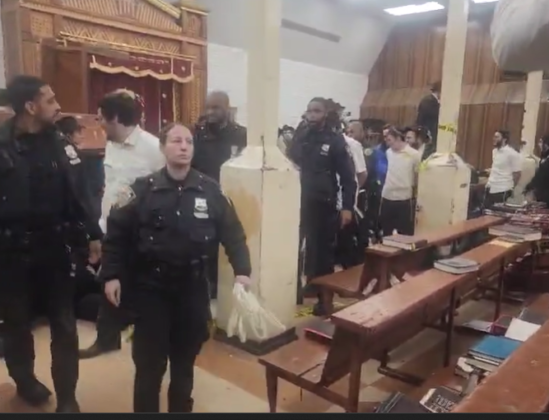UK Study Scrutinizes the Use of Puberty Blockers in Gender Dysphoric Youth
Edited by: TJVNews.com
In recent years, the landscape of gender treatment for adolescents has undergone significant scrutiny, with the credibility of widely prescribed puberty-suppressing drugs coming under intense scrutiny, according to a report that appeared on Wednesday in The Wall Street Journal. The release of a landmark review commissioned by the U.K.’s National Health Service has focused onthe glaring gaps in medical evidence supporting such treatments, prompting a reevaluation of practices across Europe and beyond.
Authored by esteemed pediatrician Dr. Hilary Cass, former president of the Royal College of Pediatrics and Child Health, the report sheds light on the alarming deficiency of robust evidence backing the administration of puberty-suppressing drugs to transgender minors. According to the information provided in the WSJ report, the exponential surge in demand for gender dysphoria treatment in the past decade prompted the NHS to commission this comprehensive review, which has now unveiled the stark reality: the medical rationale for early puberty suppression remains shrouded in ambiguity, with scant evidence regarding its impact on gender dysphoria, mental health, or psychosocial well-being.
Central to the findings is the call for a more holistic approach to treating adolescents grappling with gender dysphoria. Rather than hastily resorting to pharmacological interventions, the review advocates for a comprehensive assessment encompassing screening for autism and a broader evaluation of mental health, as was reported by the WSJ.
The implications of the review extend far beyond the shores of the United Kingdom, reverberating throughout Europe and prompting a collective reevaluation of existing practices. As per the information contained in the WSJ report, several European nations, including the U.K., Sweden, Finland, Norway, and France, have heeded the cautionary call, acknowledging the dearth of compelling evidence concerning the widespread use of puberty-suppressing drugs for minors with gender dysphoria. Emphasizing the principle of primum non nocere, these countries have urged restraint, emphasizing the need for rigorous evaluation of the risk-benefit profile before embarking on such interventions, the WSJ report added.
Notably, the U.K.’s NHS, renowned as the largest state-run health system globally, has taken decisive action in response to the review’s findings. Ceasing the routine prescription of puberty blockers except for patients enrolled in clinical trials, the NHS has signaled a pivotal shift towards evidence-based practice and heightened scrutiny of interventions targeting transgender minors, the WSJ report indicated.
In the United States, the landscape of gender-affirming care for minors is marked by a stark dichotomy: while major medical associations advocate for such care, a growing number of states have enacted legislation or policies restricting access to puberty blockers and other forms of gender-affirming treatment for youth, as was explained in the WSJ report.
At the heart of this discourse is the Cass report, a seminal review commissioned by the U.K.’s National Health Service (NHS) in response to the exponential increase in adolescents seeking gender-affirming treatment. Authored by Dr. Hilary Cass, the report meticulously examines the evidence base underpinning such interventions, highlighting significant gaps in knowledge, particularly concerning the long-term benefits for minors, the WSJ report observed. This scrutiny has reverberated across the Atlantic, prompting reflections on the state of gender medicine for youth in the United States.
Speaking to the WSJ, Jay Richards, a senior research fellow at the conservative Heritage Foundation, pointed out that the dearth of robust evidence on the long-term efficacy of gender-affirming care for minors warrants caution, particularly in a landscape characterized by rapid expansion and evolving practices. The United States, Richards told the WSJ, finds itself in a regulatory “Wild West” concerning gender medicine for children, where navigating the ethical and clinical complexities poses significant challenges.
The stance of major U.S. medical associations, including the American Medical Association, in support of gender-affirming care for minors stands in contrast to the wave of legislative efforts in numerous states to curtail access to such treatments, as was mentioned in the WSJ report. These measures, which prohibit or severely restrict access to puberty blockers, surgeries, and other forms of gender-affirming care, reflect deeply polarized perspectives on the appropriate scope and limits of medical intervention in matters of gender identity.
Amidst this backdrop, the WSJ reported that organizations such as Mermaids, a British charity advocating for transgender youth, welcome the insights offered by the Cass report while expressing concerns about potential misinterpretations and the imposition of additional barriers to care.
The trajectory of gender-affirming care for minors in the United States is further shaped by shifting demographics and evolving patterns of patient presentation. The transformation of the NHS Gender Identity Development Service from a relatively niche service to one inundated with requests for gender-affirming treatment underscores the dynamic nature of this field, according to the report in the WSJ. Notably, the shift towards a predominance of pubescent teenagers born as girls identifying as boys focuses on the need for tailored and responsive healthcare approaches that address the unique needs and experiences of diverse patient populations.
The closure of the Gender Identity Development Service (GIDS) operated by the Tavistock and Portman NHS Foundation Trust has ignited a profound reevaluation of transgender healthcare practices in the United Kingdom. The information in the WSJ report said that amidst concerns raised by clinicians regarding the expeditious referral of patients for gender transitioning and the lack of robust escalation mechanisms for addressing apprehensions, the closure of GIDS underscores the imperative of ensuring thoughtful and rigorous protocols in transgender healthcare provision.
One pivotal voice in this discourse is Keira Bell, a former patient of GIDS, whose experience sheds light on the complexities and challenges inherent in transgender healthcare. According to the WSJ report, at the age of 16, Bell was prescribed puberty blockers after just three brief consultations, subsequently undergoing a mastectomy as part of her gender transition journey. However, Bell’s hindsight reveals a profound sense of regret, as she expressed a desire for greater scrutiny and challenge from medical professionals regarding her decision.
Bell’s testimony underscores the critical importance of comprehensive and nuanced assessments in transgender healthcare, where patients are provided with the space and support to explore their gender identity with clarity and informed consent.
In response to these concerns, the NHS announced a comprehensive review of the use of gender-affirming hormones such as testosterone and estrogen, emphasizing the need for extreme caution when considering referrals for hormone intervention in individuals under 18, as was detailed in the WSJ report.
Despite the closure of GIDS, adolescents can still access such treatments from private providers, highlighting the need for equitable and accessible healthcare options for transgender individuals.
In a proactive step towards enhancing transgender healthcare provision, the establishment of two new regional NHS hubs in England represents a concerted effort to offer specialized advice and support to transgender children and adolescents. The report in the WSJ said that these hubs will not only provide essential guidance but also undertake comprehensive data collection on treatments, facilitating evidence-informed decision-making and ensuring that future healthcare policies are grounded in empirical research and patient experiences.
The landscape of gender medicine has been profoundly shaped by the pioneering work of Dutch clinics and the subsequent adoption of what became known as the “Dutch protocol”, as was explained in the WSJ report. However, the Cass report has cast doubt on the foundational study that propelled the widespread use of puberty blockers in transgender adolescents.
The 2011 Dutch study, heralded as a breakthrough in transgender healthcare, purported to demonstrate the efficacy of puberty blockers in alleviating the mental anguish experienced by adolescents grappling with gender dysphoria. The WSJ reported that by delaying the onset of puberty, these blockers purportedly provided individuals with more time to consider their gender identity while mitigating emotional distress. However, the Cass report scrutinized the methodology and findings of this seminal study, revealing significant methodological shortcomings that undermine its credibility.
Of particular concern is the high proportion of participants who failed to complete post-treatment questionnaires, ranging from 59% to 73%. This attrition rate raises questions about the validity and generalizability of the study’s conclusions, as the experiences of a substantial portion of participants remain unaccounted for, the report added. Moreover, the concurrent provision of psychological therapy to all participants complicates the attribution of improvements in mental well-being solely to puberty blockers, obscuring the delineation between the effects of medication and therapy.
The UK’s own foray into studying the effects of puberty blockers yielded contrasting results, further muddying the waters of transgender healthcare. As per the WSJ report, despite the burgeoning enthusiasm for gender treatment, particularly in light of the purported success of the Dutch protocol, the UK’s trial revealed a stark divergence from its Dutch counterpart. Rather than experiencing improvements in mental health post-treatment, the majority of participants showed no discernible benefits. Furthermore, the WSJ report noted that the overwhelming majority of participants ultimately opted to pursue gender-affirming hormones, raising concerns about the unintended consequences of puberty blockers.
This juxtaposition of findings places a spotlight on the complexity and nuance inherent in transgender healthcare, where the efficacy of interventions is contingent upon multifaceted factors including individual differences, clinical context, and methodological rigor, the WSJ report affirmed. The discrepancy between the Dutch and UK trials also calls attention to the need for cautious interpretation and a critical appraisal of research findings in this rapidly evolving field.
Amidst these debates, questions linger regarding the true impact of puberty blockers on the trajectory of gender transition in minors. While proponents argue that such interventions provide invaluable time for self-exploration and decision-making, skeptics caution against the potential unintended consequences, including the hastening of irreversible medical interventions.















